Warning! The brake pads must be replaced on both front/rear brakes at the same time. Remember that the dust generated during the operation of the brake mechanisms may contain asbestos, which is extremely harmful to human health. Never blow off dust with compressed air or inhale it - wear a protective mask or respirator when servicing mechanisms. Never use gasoline or petroleum-based solvents to clean brake system components - use only branded cleaners or methyl alcohol!
1. Remove the cap from the brake fluid reservoir. Pump out about 2/3 of the hydraulic fluid contained in the reservoir.
2. Loosen the nuts on the respective wheels. Jack up the front / rear of the car and place it on props, support the wheels on the ground with wheel chocks.
3. Remove front/rear wheels.
Note. All four brake pads on both wheels of the same axle must be replaced at the same time. To avoid confusion, work with each mechanism individually - the second, if necessary, can be used as a model during assembly.
4. Carefully inspect the brake disc (see Section Check of a condition, removal and installation of a brake disk). If it is necessary to perform a groove, the disk will also have to be removed (see below).
5. When replacing the brake pads of the front wheels, follow the instructions given in the illustrations below - carefully study the explanatory captions for the pictures.
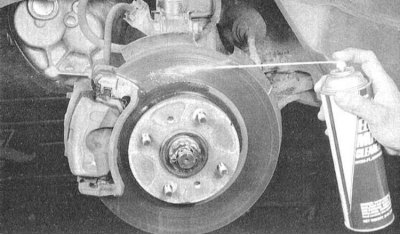
Before disassembly, the brake mechanism should be thoroughly cleaned using a special agent, then dried; Never blow off brake dust with compressed air!
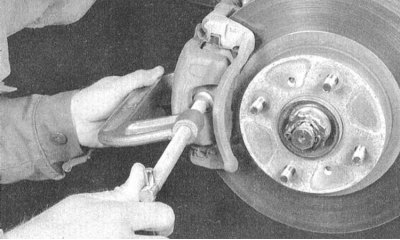
Press the piston into the caliper cylinder with a clamp (the supporting end of the clamp starts behind the caliper, the screw end rests against the outer brake shoe).
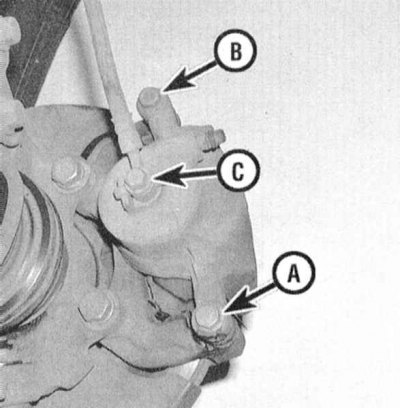
Remove the lower caliper mounting bolt (A); top bolt (IN) should only be turned out when the caliper needs to be removed. Hollow bolt nipple connection (WITH) only to be given away to replace the caliper.
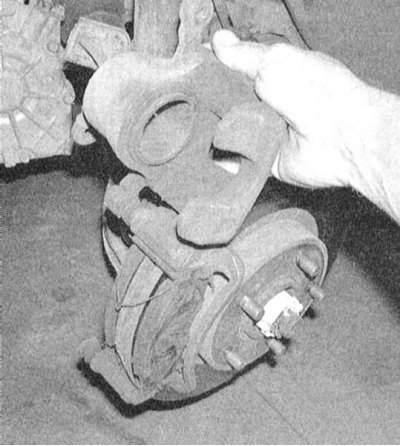
Raise the caliper by removing it from the brake disc.
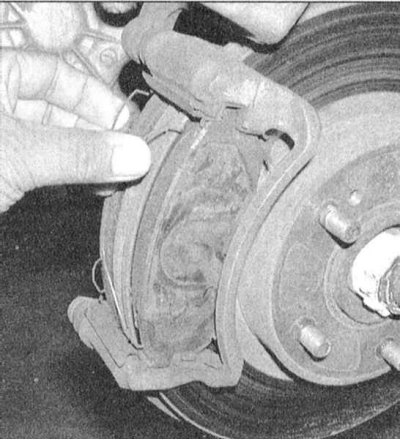
On models since 1995, no. remove anti-squeal springs.
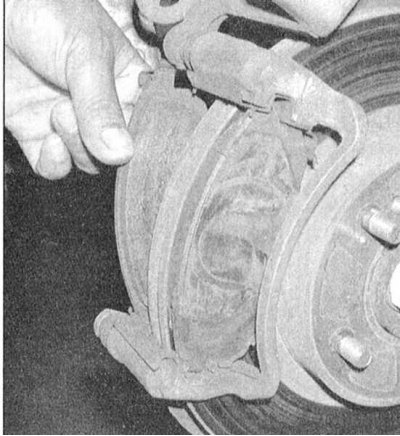
Remove the inner brake pad.
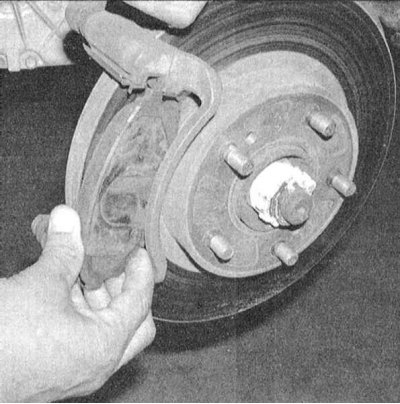
Remove the outer block.
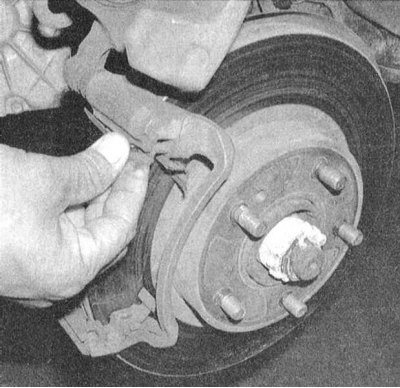
Remove the anchor shackle upper and lower shoe holders.
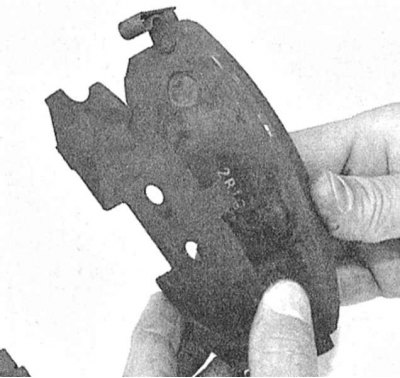
Remove the adjusting pads from the pads.
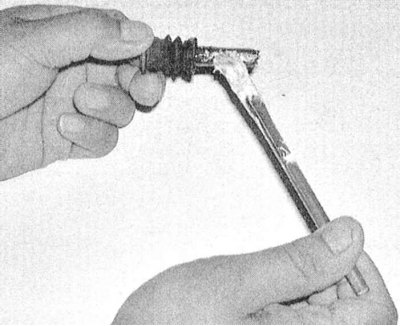
Wipe the guide pin of the caliper, inspect it for nicks and signs of corrosion, then lubricate it with refractory grease and install it in its regular place in the anchor bracket.
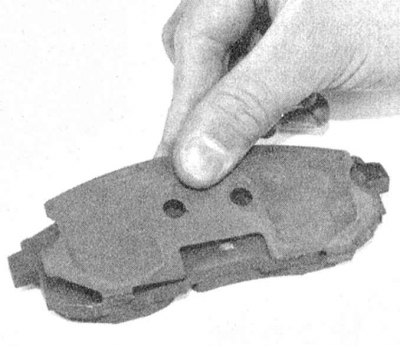
Install adjusting pads on the pads.
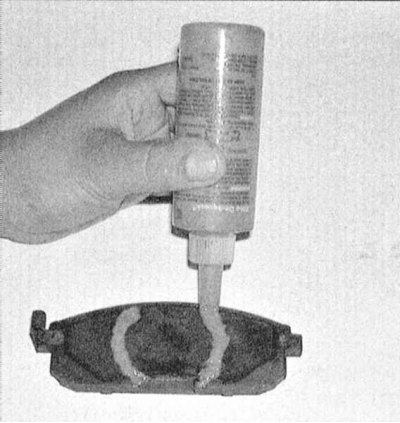
Lubricate the reverse sides of both pads with anti-squeal compound, let the compound harden for a few minutes.
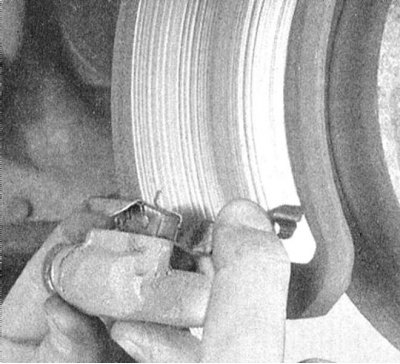
Install the upper and lower shoe holders.
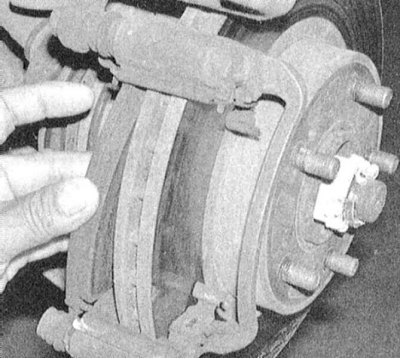
Install the inner shoe (This pad is equipped with a wear indicator).
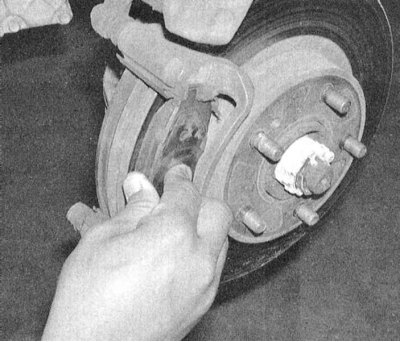
Install the outer block.
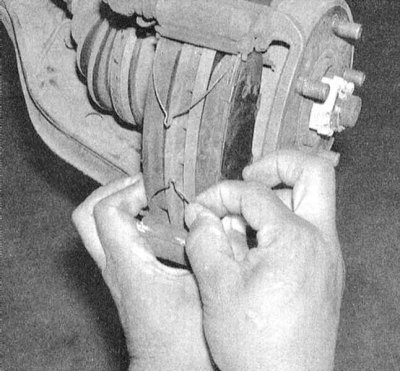
On models since 1995, no. install anti-squeal springs, then (on all models) lower the caliper, screw in the lower mounting bolt and tighten it with the required force.
Note. If you can not put the caliper on the pads, press the piston into the cylinder with a clamp.
6. The procedure for replacing the pads on the rear disc brakes is shown in the illustrations below.
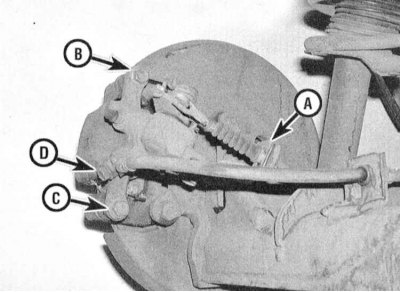
After cleaning the assembly of brake dust, release the parking brake cable retainer (A) and disconnect the cable from the actuating lever. On models since 1995, no. remove the upper caliper bolt (A) (on earlier models, remove bolt C); spigot hollow bolt (WITH) only to be given away to replace the caliper
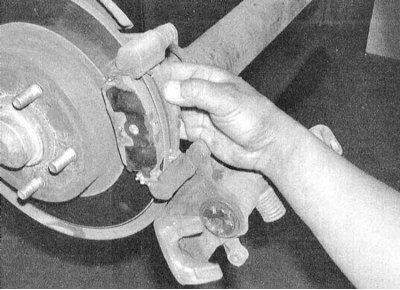
Remove the caliper from the brake disc and the brake pads placed in the anchor bracket; remove the inner block.
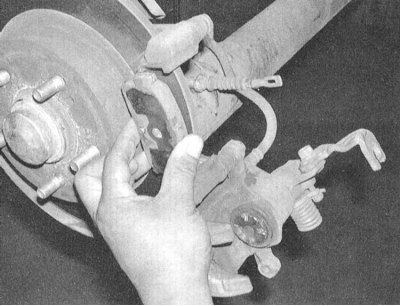
Remove the outer block.
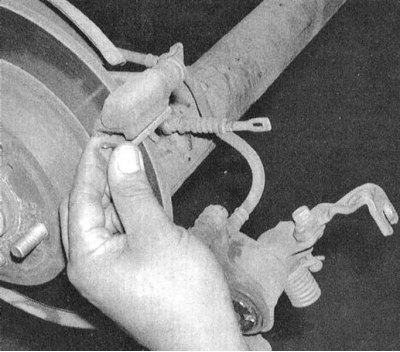
Remove the upper and lower shoe holders.
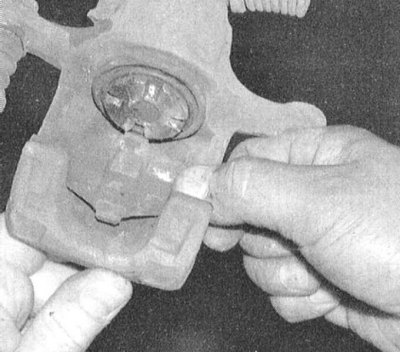
Remove the anti-squeal springs from the caliper and carefully check their condition; if cracks or other mechanical damage are found, replace the springs.
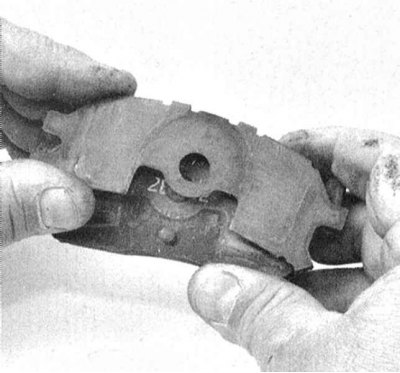
Remove the adjusting pads from the pads.
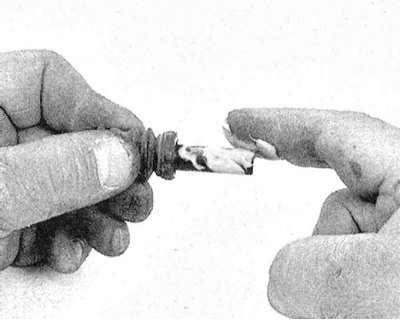
Wipe the guide pin of the caliper, inspect it for nicks and signs of corrosion, then lubricate it with refractory grease and install it in its regular place in the anchor bracket.
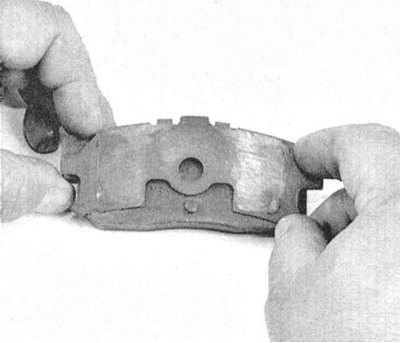
Install adjusting pads on the pads.
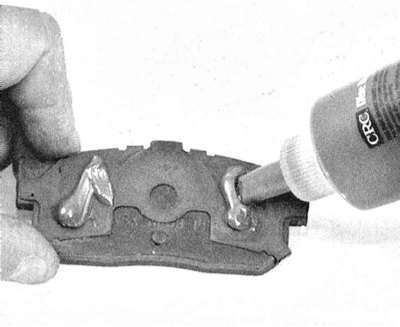
Lubricate the reverse sides of both pads with anti-squeal compound, let the compound harden for a few minutes.
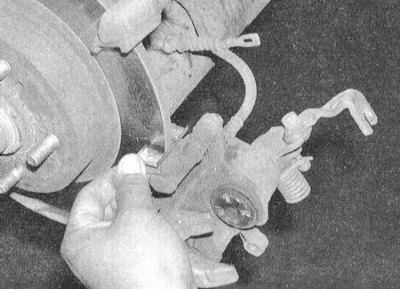
Install the upper and lower shoe retainers.
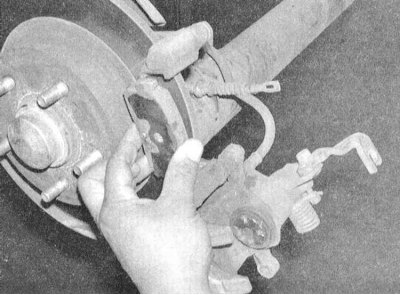
Install the outer block.
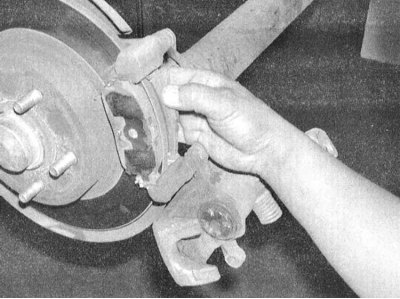
Install the inner block.
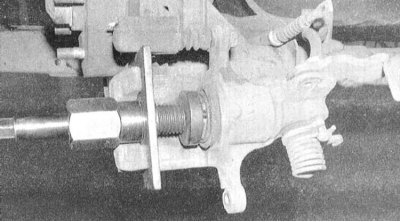
Rotating the piston, drown it in the caliper cylinder (use a special tool - ask in car accessories stores, in extreme cases, you can use needle nose pliers). Lower the caliper to its original position, return the mounting bolt and tighten it to the required force, then connect the parking brake cable to the brake actuator.
7. When assembling, make sure that the fixing bolt is tightened to the required torque.
8. When finished assembling, depress the foot brake pedal several times to shrink the new pads on the discs. Check brake fluid level, correct if necessary (see chapter Settings and ongoing maintenance). Before starting the normal operation of the vehicle, make sure that the brake system is functioning properly.